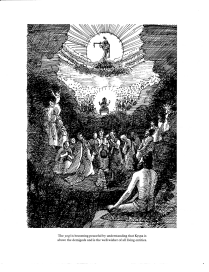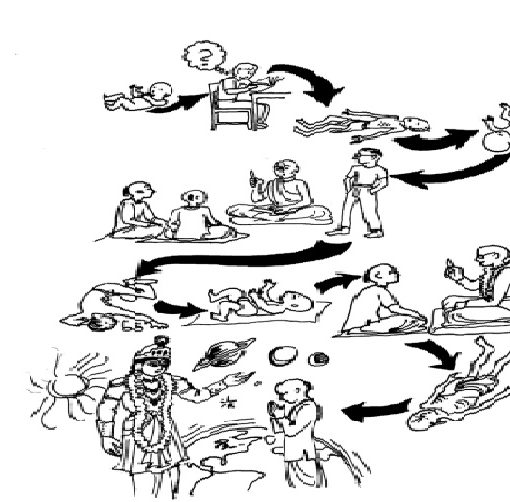Impersonal, Localized & Personal
The Absolute Truth is realized in three phases = impersonal, localized and personal. In the Śrīmad-Bhāgavatam it is said that the Absolute Truth is realized by different person according to different angle of vision. Just like if you see from a distant place one mountain, you find something cloudy. If you go nearer, then you find it is something green. And if you enter actually the mountain, then you find there are so many varieties—there are trees, there are houses, there are living entities, animals, everything. The object is one, but according to the vision of the person, from length of distance, the same object is realized in different phases.
Therefore the Bhāgavata says, vadanti tat tattva-vidas tattvaṁ yaj jñānam advayam [SB 1.2.11]. The object is one, but according to the understanding of the same one, somebody is realizing the Absolute Truth as impersonal Brahman, and somebody is realizing the Absolute Truth as localized Paramātmā, and somebody is realizing the same Absolute Truth as the Supreme Personality of Godhead. Ultimately, the Absolute Truth is Supreme Personality of Godhead, Bhagavān. Therefore Vyāsadeva, the compiler of Mahābhārata, he says, śrī bhagavān uvāca. So our this Kṛṣṇa consciousness movement… The bhagavān is called Kṛṣṇa. He has got many millions of name, but “Kṛṣṇa” name is the chief. “Kṛṣṇa” name means the attractiveness, all-attractive. God must be all-attractive. It is not that God is attractive for one person, not for the other. No. God is attractive for all living entities. Therefore you see the picture of Kṛṣṇa = He is loving the calves and cows, He is loving the trees, He is loving the gopīs, He is loving the cowherds boy. For Him, for God, everyone is lovable object, because everyone is son of God.
Bhagavad-gītā 7.1–3 Sept. 10, 1973 Stockholm https://vedabase.io/en/library/transcripts/730910bgsto/





